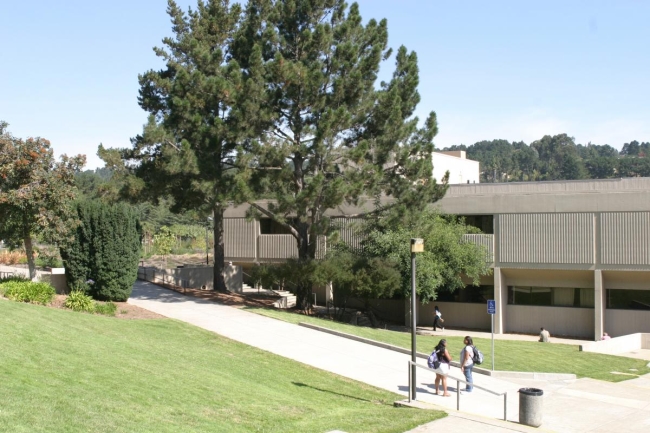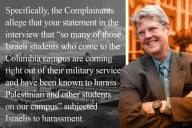You have /5 articles left.
Sign up for a free account or log in.

Peralta Community College District/Suzanne Cancilla-Fox
Little has changed at California's Peralta Community College District since 2011, according to Michelle Giacomini, who led a report into its financial stability at that time.
Giacomini, deputy executive officer of the state's Fiscal Crisis and Management Assistance Team (FCMAT), said one of her biggest concerns after the agency's June release of its most recent report on the district, which is located in the East Bay, is that nothing was done with the one from eight years ago.
The latest FCMAT report, which had 75 recommendations, found the district’s fiscal health risk score to be nearly 70 percent. A score of 40 percent or higher indicates high financial risk for the institution. In response to the report from the state auditor, Eloy Ortiz Oakley, chancellor of California's community college system, has appointed a fiscal monitor to represent the state at board meetings and report back on its progress.
Problems the report identified about the district include a lack of adherence to policies and procedures, a high number of administrators, declining enrollment and increased staff levels, creating an unsustainable budget, vacant positions and untrained staff in the finance department, and poor communication.
“If you really look at their policies and procedures, the capacity of their staff, relationships -- all of that is not working well,” Giacomini said.
Now that the district has data and blueprints for how to fix its problems from multiple FCMAT reports, its own auditors and other agencies, Giacomini said she is hopeful that the college can turn it around this time.
‘Head in the Sand’
The “Peralta culture” of poor management and micromanaging trustees is a big barrier to change, said Michael Mills, a retired professor of history in the district and former president of the Peralta Federation of Teachers, a local affiliate of a faculty union.
Mills also was chairman of the Community Oversight Committee, which was created to oversee how extra tax money was spent after a parcel tax increase. The tax, passed in 2012, provided the district with an additional $8 million intended to go toward academic affairs, Mills said.
While Peralta's funding for faculty salaries, books and supplies increased significantly after the tax was approved, it then decreased. Eventually, 75 percent of those funds was re-allocated to other parts of the district, like administration and staff, Mills said. A 2017 audit performed by the district showed that funding for academic items decreased after 2014.
When the district decided in 2018 to ask voters to extend the funding, faculty members accused district administrators of misspending the previous revenue. Jowel Laguerre, the district's chancellor at the time, denied the accusations.
A few months after the tax was approved again, the district’s board approved an early retirement plan for Laguerre.
Frances White, who has nearly four decades of higher education experience, including roles with the California community college system, is serving as acting chancellor for the district until April 2020.
“When I was brought in this past spring, I was warned of the difficulties facing this college district,” White said. She agrees that there’s a culture problem, because people don't like to hear bad news.
“It’s kind of a head-in-the-sand culture” for everybody, she said, adding, “You just don’t last long in life with your head in the sand.”
‘You Just Have to Grab It’
Jennifer Shanoski, president of the Peralta Federation of Teachers, said she’s optimistic about the district's future. But she’s concerned that it will retain high-level positions at the expense of faculty, which would contribute to declining enrollments.
The FCMAT report said most districts Peralta’s size have two to three vice chancellors, while Peralta had six at the time. The district’s action plan proposes going down to four, White said.
White and her staff have created a reorganization and budget review timeline for the board to accept recommendations or make different changes over the course of the year, with the areas overseen by vice chancellors to be considered between October and December.
“The board has agreed in concept to downsize chancellors to four or less,” White said. “How it looks will play out over time.”
Much of the work will rely on whoever becomes the new chancellor, as well.
Giacomini has a “really strong sense” that change will happen at the district, but a key piece is communication, an area where Peralta historically has struggled.
“This isn’t going to happen without a lot of collaboration, and it won’t happen without trust and collaboration,” she said, which the new chancellor will have to foster.
Shanoski said having a fiscal monitor seemed to help in 2011, and she believes there’s an opportunity to change course for Peralta with new leadership.
“I think Peralta has a lot of great people. We serve great students,” she said. “I think it’s there -- you just have to grab it.”
If changes don’t stick this time around, the district could get a “super trustee,” White said, meaning the state would dismiss the board and take control of the district and pursue replacing the board.
“Going around on the second time, which is kind of a problem, carries a different kind of weight and importance,” she said. “I hope, with the new chancellor coming on board, over time they’ll be able to create this change and that the Peralta culture won’t get in the way of stopping the change.”








